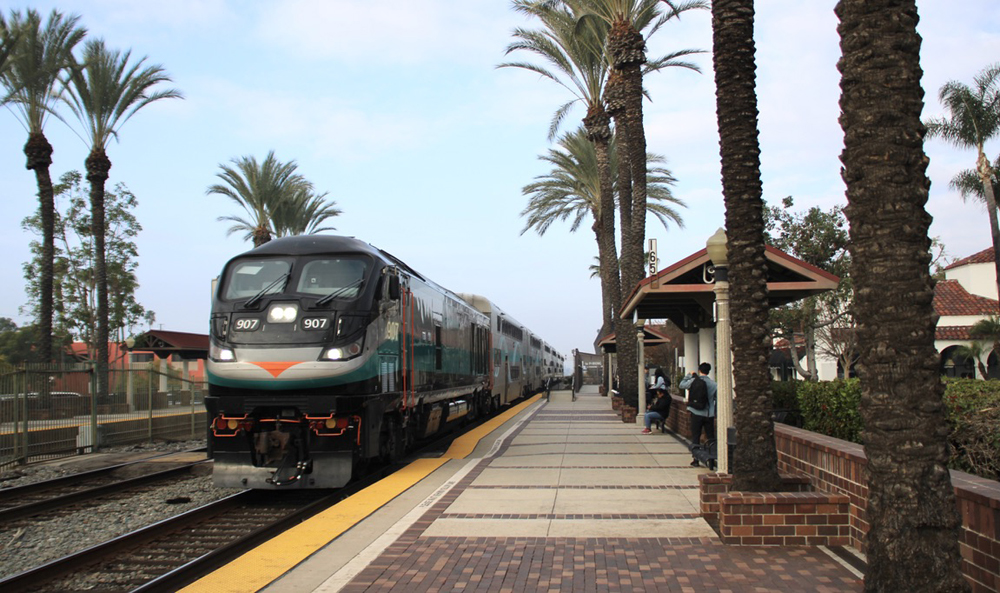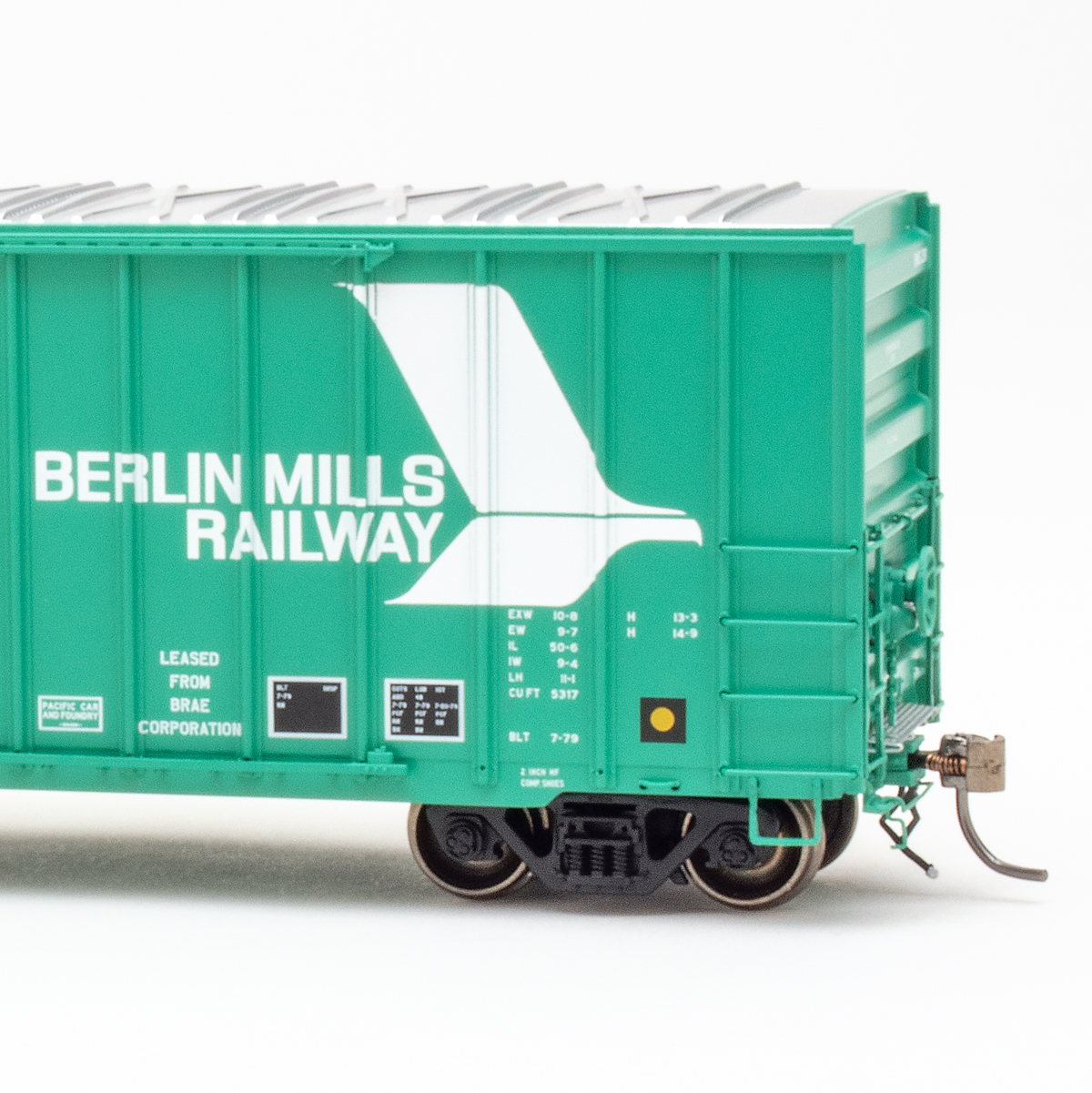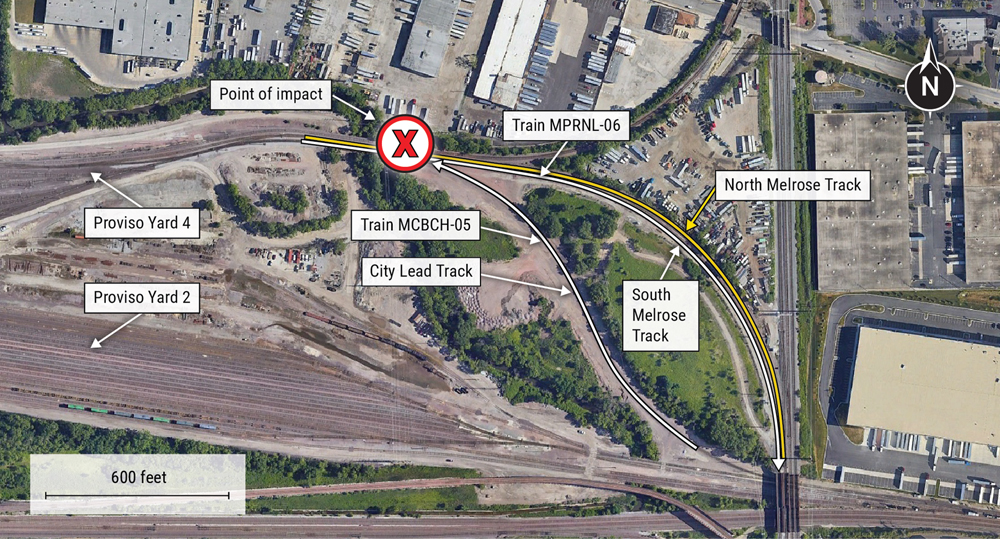
LOS ANGELES — Metrolink will receive funding from the South Coast Air Quality Management District to purchase two zero-emission rail vehicles, and to replace a dozen older locomotives with Tier 4-complient lower-emission locomotives, the commuter rail agency has announced.
South Coast AQMD has approved up to $59.3 million for the zero-emission vehicles — likely to be multiple-unit trainsets for use on its Antelope Valley Line — through its Carl Moyer Program, which provides grants for equipment that go beyond regulatory requirements to reduce emissions. The $87.4 for the locomotives comes from the AQMD’s contingency grant award list.
Metrolink was the first U.S. passenger operator to operate Tier 4 locomotives, introducing the first of what is now a fleet of 40 EMD F125 locomotives in 2017. The new locomotives will replace a dozen Tier 2 units still in service.
“We continue to explore emerging technologies that will help us reduce our environmental footprint because it’s the right thing to do,” Metrolink CEO Darren Kettle said in a press release. “In 2012, we pushed for Tier 4 locomotives because we knew the impact that reducing our emissions would have on the communities we serve. Ten years later, we became the first passenger rail system in the nation to power our entire locomotive fleet with renewable fuel. We’re honored to once again have the support of South Coast AQMD as we pursue lower- and zero-emission alternatives.”
Metrolink will initiate a process to solicit manufacture proposals for the zero-emission vehicles, a pilot program to determine a broader transition to zero-emission technology. That program follows a presentation to Metrolink’s board which considered three options for the pilot — rebuilding a retired Tier 0 locomotive to run on battery or a hydrogen fuel cell-battery hybrid system; a new-build battery or hydrogen fuel-cell locomotive; or a battery or fuel-cell multiple-unit trainset. The 86-page document concluded that exploring in-depth planning for the multiple-unit option on Metrolink’s Antelope Valley Line, along with exploring a partnership with Caltrans on its Zero Emissions Research and Development Program, “best services the interests of Metrolink.” Caltrans has 10 hydrogen-powered trainsets on order for use in the San Joaquin Valley [see “














What 12 locomotives are they mentioning ?
If anything, I want to thank Cali for paying for this project with Cali taxpayer money – not mine. There are at least two other articles on Federal grants for rail equipment in states and cities that I will likely never use.
What infuriates me about all this funding and retiring is that they aren’t expanding the existing Metrolink infrastructure or rebuilding locomotives. If this is meant to be a better alternative to freeways why aren’t they making the rail lines more accessible across the LA area? Is there an overall improvement with over air quality by replacing these locomotives when you have freeways in the same area?
Well said. I would add that a handful of small California freight railroads are also piloting use of low/zero emission prime movers, again with large state subsidies.
Cat’s out of the bag, folks. The only rail carriers buying zero-emission or low-emission locos are the deeply subsidized passenger authorities. For-profit freight railroads won’t touch them but instead send their 30-year-old beasts back to Wabtec or Progress Rail to be remanufactured. Of course my observation in this paragraph is anything but original. I’m the millionth person to state this, plagiarizing my comment from the previous 999,999.
So what’s my point? My point is, add this inconvenient fact to the recycled press releases such as this morning’s article from Metrolink.
Oh, while I’m at it, the term “deeply subsidized passenger authorities” in my text above is today’s understatement. Capital expenditures are off the books when calculating the ever-increasing operating subsidies for stagnant or declining patronage.
As I frequently post, I’m not opposed to these subsidies. I, too, ride the trains. What I’m saying is, we need transparent disclosure. Ditto, those subsidies for any other transportation mode like highways or Essential Air Service.
Renewable Biodiesel and Biogas should be considered, they are “near” zero by using food and agicultural waste that would release methane into the atmospere without futher intervention. California has a large agicultural and resteraunt sector, plus sewer treatment plants, but them all to use creating fuel for locomotives.